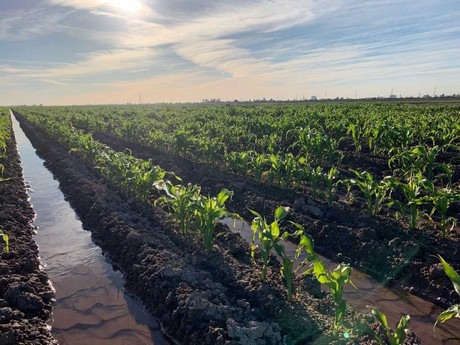The corn season in the western United States is about to complete its transition from the Imperial Valley to the San Joaquin Valley. Now that consistently hot temperatures have settled in the south, growers in the Central Valley will be producing corn for the next four months. This marks the end of the Imperial Valley corn season that began back in April.
"Most growers in the Imperial Valley are wrapping up now," observed Ryan Van Groningen of Van Groningen & Sons. "Once temperatures regularly get over 100 degrees, corn production moves into the San Joaquin Valley. The general production region stretches from the south near Mendota to the north around Brentwood. These areas will be in production until September or October."
Cool spring brings later start
There were later than average starts for both the Imperial Valley and the Central Valley due to a cooler than normal spring. Rains also pushed the growing season back, resulting in the season being about a week behind. This disrupted the market somewhat with Memorial Day plans hindered by the delays.

"The market for the southern region started off strong because of tight availability and remained that way up until Memorial Day," Van Groningen explained. "However, because of the cooler weather causing delays, a lot of the plantings for Memorial Day ended up being harvested afterwards, which resulted in an abundance of product and a significant dip in pricing."
"For the Central Valley season, we also experienced a slight delay," he continued. "However, everything looks to be pretty good now and the season is on track to be a very good one."
Most California corn sold in the west
Because of the abundance of corn availability in the eastern half of the country during summer, most of California-grown corn remains in the west. Freight costs provide a further disincentive for California-based shippers to send product too far east.
"The majority of Californian corn stays in the western 11 states," Van Groningen said. "The eastern states grow a considerable amount, plus they typically have lower freight costs. For example, freight is cheaper to regions like the Midwest than it is from California to the Midwest."
For more information:
Ryan Van Groningen
Van Groningen & Sons
Ph: +1 (209) 982-5248
ryanvg@vgandsons.com
www.vgandsons.com
